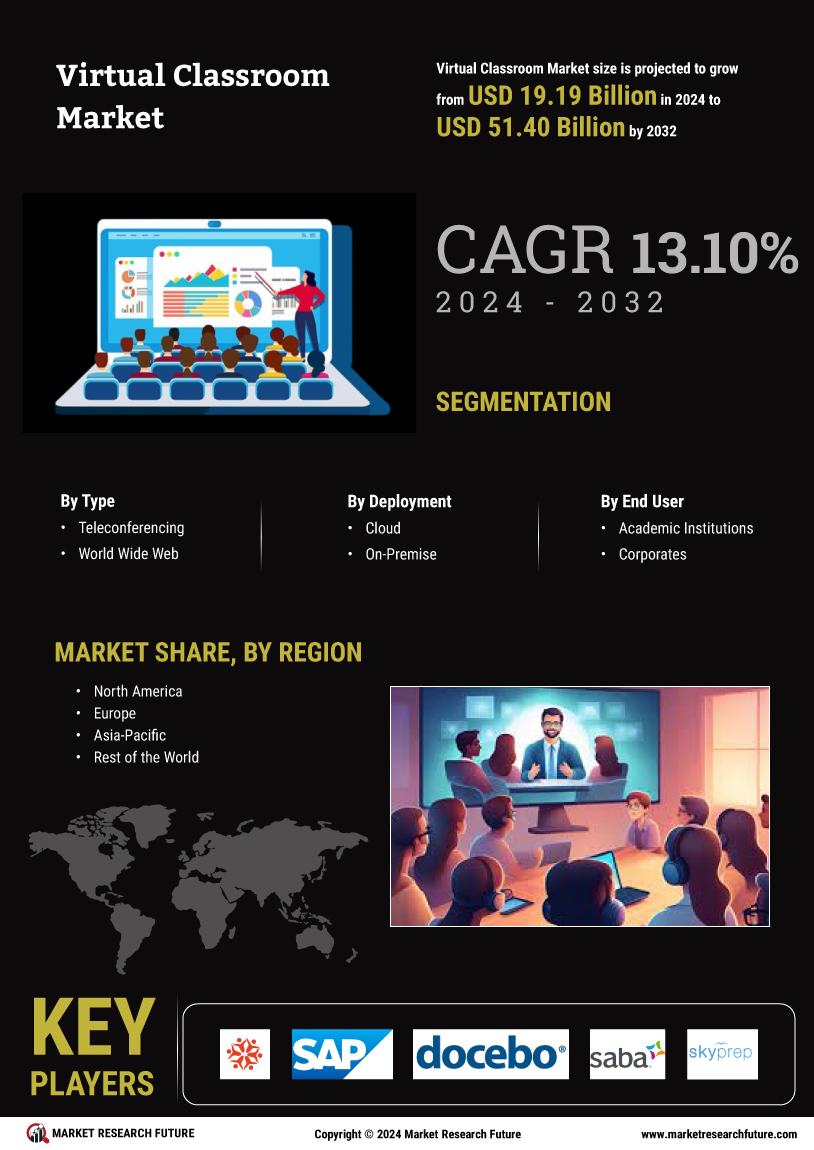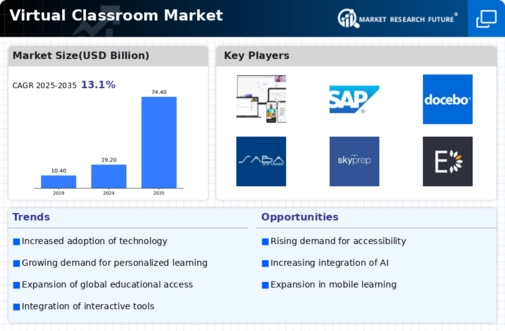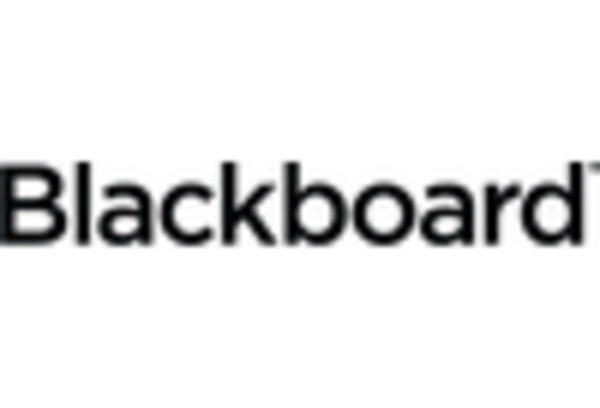Leading market companies are making significant R&D investments to diversify their product offerings, which will drive the Virtual Classroom Market's expansion. Important market developments include new product releases, contractual agreements, mergers and acquisitions, greater investments, and collaboration with other organizations. Market participants also engage in several strategic actions to increase their worldwide presence. The market for Virtual Classroom industry is becoming more competitive. Therefore, it needs to offer reasonably priced products to grow and thrive.
Manufacturing locally to reduce operating costs is one of the primary business strategies manufacturers employ in the worldwide Virtual Classroom industry to assist customers and expand the market sector. The market for Virtual Classroom industry has recently provided some of the most important benefits. Major players in the Virtual Classroom Market, including Hospitality Sales and Marketing Association International (HSMAI), and others, are attempting to increase market demand by investing in research and development operations.
The Hospitality Sales and Marketing Association International (HSMAI), the industry's leading proponent of thoughtful, sustainable hotel revenue development, is dedicated to generating more business for hotels and their partners. Through initiatives including the Marketing Strategy Conference, Adrian Awards, and HSMAI ROC, the association offers hotel industry professionals and their partners the resources, knowledge, and skills needed to jumpstart sales, inspire marketing, and maximize profitability. HSMAI, a membership organization with over 5,000 members ly and 40 chapters in the Americas Region, was founded in 1927. In January 2020,
In collaboration with Holly Zoba and Dan Wacksman, the current and past HSMAI Marketing Advisory Board chairmen, the Hospitality Sales and Marketing Association International (HSMAI) will introduce the Hotel Digital Marketing Essentials, a six-week virtual classroom series in 2020. Together, they offer a facilitator-led, interactive online course that will teach participants how to navigate the confusing world of hotel digital marketing, obtain valuable knowledge to improve their internal collaboration and establish connections with business partners to increase sales.
Utilizing cutting-edge technologies and services, their purpose is to collaborate with the education community to enable learner and institutional success. Blackboard offers a dynamic platform that combines powerful data and analytics capabilities with a learning management system (LMS), web conferencing, and accessibility technologies. Blackboard is a partner in change for education thanks to its unrivaled comprehension of the learner's world, the most comprehensive student-success solutions, and its best innovation potential. In March 2020,
The Blackboard Collaborate Self-Service Portal, which Blackboard Inc. unveiled today, enables higher education institutions, school districts, and organizations to quickly install the virtual classroom solution specially created for teachers and students. In direct reaction to the requirement for institutions and districts worldwide to swiftly shift to digital teaching and learning modalities as part of COVID-19 contingency planning, Blackboard drastically decreased the time from purchase to deployment. The web-based self-service portal is made to assist organizations in starting teaching in a virtual classroom in a matter of hours.


















Leave a Comment